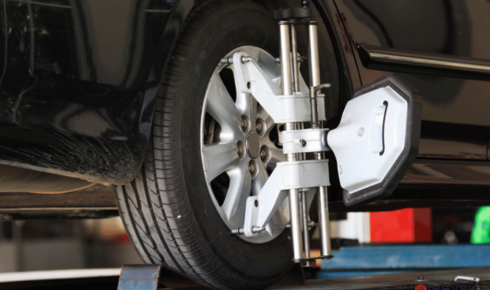There’s a quiet kind of satisfaction in a perfectly aligned car. The steering feels smoother, tires wear evenly, and there’s a subtle sense that everything is just… right. Behind that silky drive and symmetrical tread, though, lies a careful process — and more importantly, the tools that make it all possible. When it comes to wheel alignment, precision isn’t a luxury. It’s a necessity.
Whether you’re running a bustling auto shop or just the go-to garage guru in your neighborhood, the details of your equipment can make or break your workflow. And let’s be honest — if you’ve ever wrestled with misfitting gear or unreliable readings, you know exactly what I mean.
It All Starts With the Clamp
Let’s talk about a piece of gear that often gets overlooked — the humble wheel clamp. It’s not flashy. It doesn’t beep or blink or show off a digital readout. But its role? Critical. If your clamp doesn’t hold tight and true, nothing that follows will matter.
Wheel alignment clamps are the anchor for accuracy. They hold the sensors or heads in the right place — no wobbles, no guesswork. You want clamps that grip the wheel solidly without damaging the rim, are easy to adjust, and maintain their bite over time. The best ones blend rugged construction with finesse, like a tool that knows when to be firm and when to be gentle.
Over the years, I’ve seen shops trying to work around loose clamps, using zip ties or taping things into place (don’t do that). That’s a shortcut to skewed readings and angry customers.
Accessories That Actually Help
If clamps are the anchor, then accessories are the support crew. And not the kind that sit in the background, either — the good ones take your work from decent to dialed-in.
Modern changer accessories have come a long way. From bead press arms to assist rollers and specialty levers, these aren’t just add-ons — they’re force multipliers. They speed things up. They protect high-end rims. They help prevent techs from wrestling with stiff sidewalls like it’s a strongman contest.
I remember when I upgraded a basic tire changer with a power assist arm. The difference was night and day. Jobs that used to be a grind became smooth, almost graceful. Productivity soared. Techs stopped complaining about sore wrists. And the real kicker? Fewer returns due to damaged tires. Sometimes, the right tool pays for itself before the month is out.
Measuring What Matters
Now, here’s where things get nerdy — in a good way. Alignment isn’t just about lining things up by eye (though that old-school intuition is still valuable). It’s about data. Hard numbers. Measurable metrics that translate into better drivability and longer-lasting components.
This is where alignment indicators come into play. They might look simple — a gauge, a dial, maybe a digital readout — but they’re the lens through which you see the truth of a vehicle’s setup. Camber, caster, toe — these aren’t guesses. They’re numbers. And those numbers matter.
The best indicators don’t just tell you what’s wrong; they guide you to what’s right. They help techs diagnose quirks in handling, pull, or tire wear with clarity and confidence. When your indicators are accurate, durable, and easy to read under any lighting, your work improves — full stop.
The Real Cost of “Good Enough”
In the auto world, the temptation to get by with “good enough” is always there. It’s cheaper upfront. It feels okay for now. But over time? That mindset eats into your margins.
Misalignments from shaky clamps or worn indicators can mean comebacks, lost trust, and damaged reputations. Struggling with outdated tools slows your team down. And every extra minute spent on a tire change or alignment job adds up.
There’s also something to be said for pride. There’s a unique kind of joy that comes from doing the job right, with the right gear, on the first try. From watching a customer drive away knowing their car is safer and smoother than when it rolled in.
It’s More Than Just Tools
Here’s the thing. This article’s about clamps, accessories, and indicators — but really, it’s about quality. About professionalism. About knowing that every bolt you tighten and every reading you trust connects to a real-life driver counting on your work.

